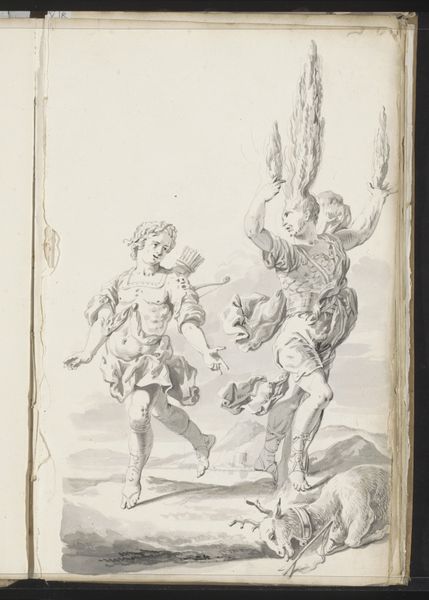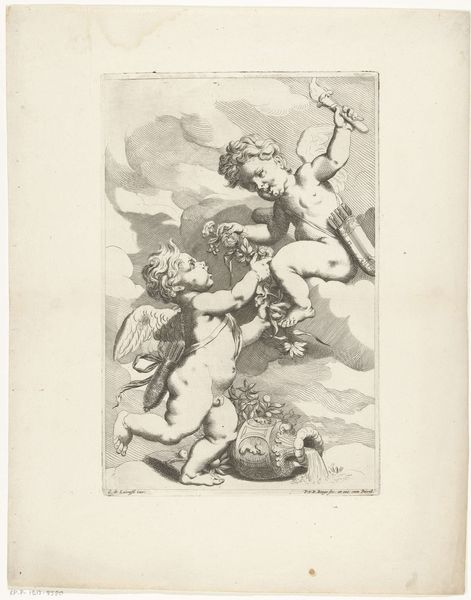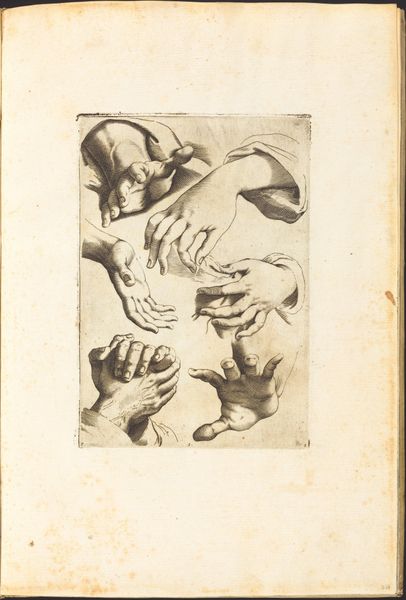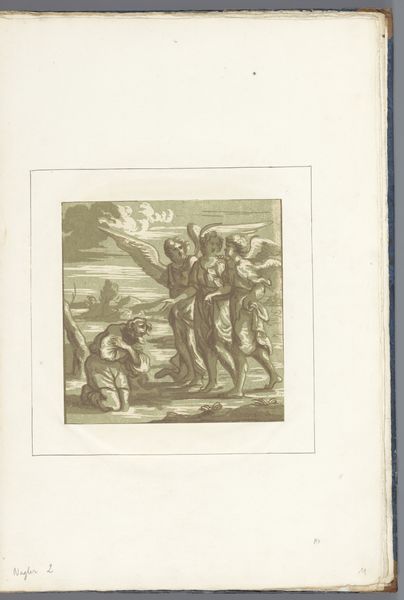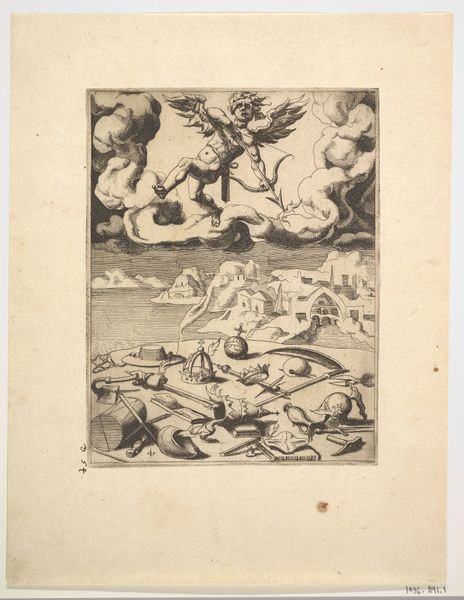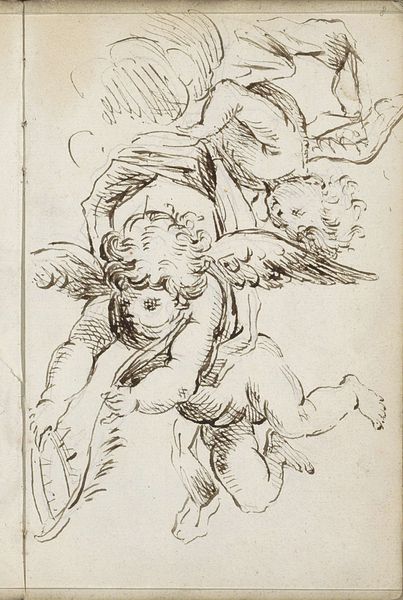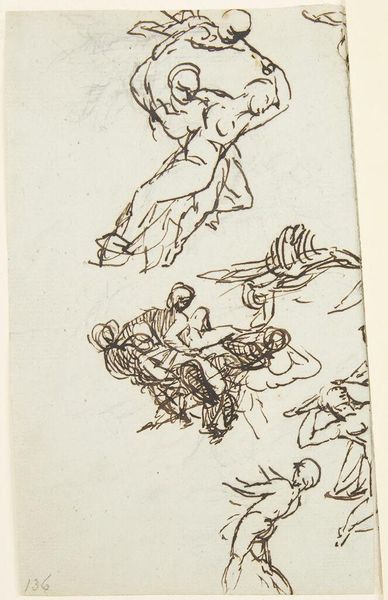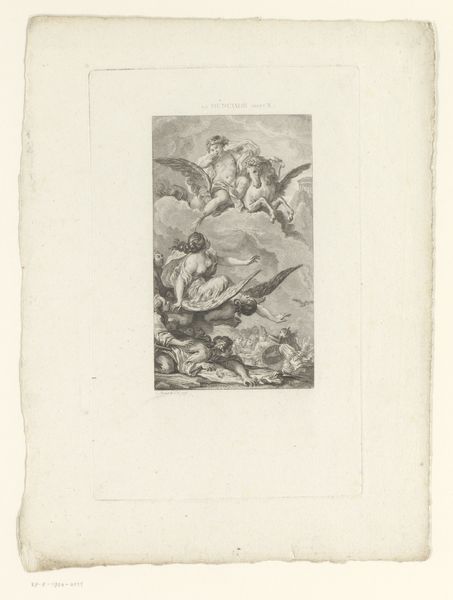
#
toned paper
#
light pencil work
#
pencil sketch
#
personal sketchbook
#
ink drawing experimentation
#
pen-ink sketch
#
sketchbook drawing
#
watercolour illustration
#
sketchbook art
#
watercolor
Dimensions: height 273 mm, width 187 mm
Copyright: Rijks Museum: Open Domain
Editor: So, this is "Tekenvoorbeelden van vliegende putti," or "Studies of Flying Putti" by Pieter de Jode I, dating back to 1629. It's currently held at the Rijksmuseum. What immediately strikes me is its sense of playfulness, these chubby figures leaping across the page. What's your interpretation? Curator: It's interesting you mention the playfulness. Considering the period, the putti – these cherubic figures – were often employed to convey very specific ideological messages within religious and political contexts. In the 17th century, their presence could legitimize power, symbolize divine favor, or represent the triumph of a particular doctrine. Do you see any elements in the composition that hint at a potential social function? Editor: Well, they're all linked together, almost like a chain. It's a very busy image...maybe symbolizing unity? Curator: Exactly! And think about the location of this work, displayed in a prominent museum. What narrative is the museum subtly reinforcing by exhibiting this? Is it merely showcasing artistic skill, or also quietly endorsing the values these figures once embodied? Moreover, these images become templates for the public - artists looking for ways to represent power and dominance within their artworks. How do we grapple with the legacy of such imagery today? Editor: So, beyond just being a drawing, it becomes a cultural artifact reflecting historical power structures... I never thought about it like that. It is more complicated than the simple joy I sensed upon first glance. Curator: Precisely! And acknowledging that complexity is crucial for a deeper understanding. Perhaps recognizing their place in artistic power dynamics gives context to the cherubic characters as a source of ongoing artistic inspiration. Editor: Thanks. I have some new things to think about on this one.
Comments
No comments
Be the first to comment and join the conversation on the ultimate creative platform.

